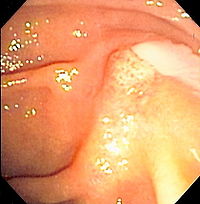
Association between eosinophil count and cholelithiasis among a population with Clonorchis sinensis infection in Foshan City, China.
Sign Up to like & getrecommendations! Published in 2019 at "Journal of helminthology"
DOI: 10.1017/s0022149x19001019
Abstract: The association between eosinophil count and cholelithiasis among people with Clonorchis sinensis infection is still uncertain. We conducted a cross-sectional study to investigate the associations among Clonorchis sinensis infection, eosinophil count and cholelithiasis. The study… read more here.
Keywords: cholelithiasis; sinensis infection; eosinophil count; count ... See more keywords

Epidemiological characterization of Clonorchis sinensis infection in humans and freshwater fish in Guangxi, China
Sign Up to like & getrecommendations! Published in 2022 at "BMC Infectious Diseases"
DOI: 10.1186/s12879-022-07244-2
Abstract: Background Clonorchiasis is a widespread yet neglected foodborne disease with over 85% of all cases found in China. Guangxi province, located in southeastern China, ranks among the highest endemic provinces. We explore the epidemiological status… read more here.
Keywords: sinensis; infection humans; freshwater fish; sinensis infection ... See more keywords

Clonorchis sinensis antigens alter hepatic macrophage polarization in vitro and in vivo
Sign Up to like & getrecommendations! Published in 2017 at "PLoS Neglected Tropical Diseases"
DOI: 10.1371/journal.pntd.0005614
Abstract: Clonorchis sinensis infection elicits hepatic inflammation, which can lead to cholangitis, periductal hepatic fibrosis, liver cirrhosis, and even cholangiocarcinoma. Hepatic macrophages are an intrinsic element of both innate and acquired immunity. This study was conducted… read more here.
Keywords: sinensis; polarization; macrophage; hepatic macrophages ... See more keywords

Cost-effectiveness evaluation of different control strategies for Clonorchis sinensis infection in a high endemic area of China: A modelling study
Sign Up to like & getrecommendations! Published in 2022 at "PLoS Neglected Tropical Diseases"
DOI: 10.1371/journal.pntd.0010429
Abstract: Clonorchiasis is an important food-borne parasitic disease caused by Clonorchis sinensis infection. The evaluation of long-term cost-effectiveness of control strategies is important for disease control and prevention. The present study aimed to assess the cost-effectiveness… read more here.
Keywords: sinensis infection; control strategies; control; cost effectiveness ... See more keywords

Clonorchis sinensis infection modulates key cytokines for essential immune response impacted by sex
Sign Up to like & getrecommendations! Published in 2022 at "PLoS Neglected Tropical Diseases"
DOI: 10.1371/journal.pntd.0010726
Abstract: Infection with helminths can modulate the host immune response, which ultimately shape morbidity and mortality of the associated diseases. We studied key cytokines for essential immune response in sera from 229 southeastern China individuals infected… read more here.
Keywords: infection; sinensis infection; key cytokines; immune response ... See more keywords

Clonorchis sinensis infection induces hepatobiliary injury via disturbing sphingolipid metabolism and activating sphingosine 1-phosphate receptor 2
Sign Up to like & getrecommendations! Published in 2022 at "Frontiers in Cellular and Infection Microbiology"
DOI: 10.3389/fcimb.2022.1011378
Abstract: Clonorchis sinensis (C. sinensis) infection induces severe hepatobiliary injuries, which can cause inflammation, periductal fibrosis, and even cholangiocarcinoma. Sphingolipid metabolic pathways responsible for the generation of sphingosine-1-phosphate (S1P) and its receptor S1P receptors (S1PRs) have… read more here.
Keywords: hepatobiliary injury; infection; sinensis infection; sinensis ... See more keywords